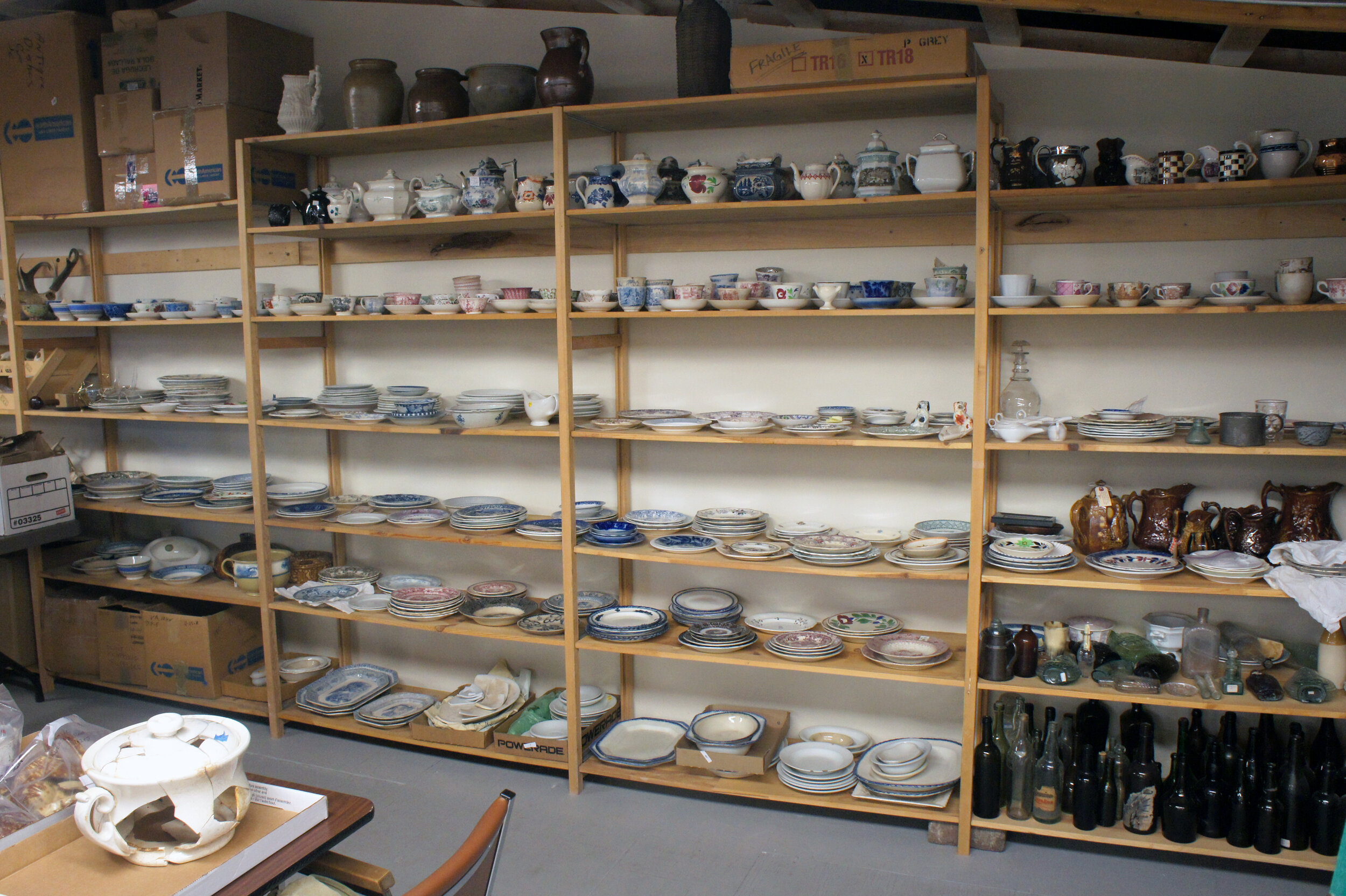An array of teacups and saucers from the museum’s comparative collection of 19th century ceramics. FWWM archives.
When people from the past create history, it’s sometimes rediscovered by people from the present. We learn about the past in many different ways. While books, maps, documents, records, and oral traditions are commonly utilized, historical archaeologists also study artifacts from locations once used by people.
These spots are called archaeological sites, and the scientific collections recovered from them are called archaeological assemblages. Many of the artifacts recovered from sites are fragmentary, and much of this material was discarded as garbage. Sometimes these fragments are incredibly small. The carefully recovered and well-documented bits and pieces in an archaeological assemblage can yield an amazing amount of information.
A small fragment of a Rockingham glaze pitcher with a cherub motif recovered from an archaeological excavation, along with the whole pitcher from the comparative collection. FWWM archives.
Because most items in an assemblage represent a relatively small portion of the complete item, it can be challenging for the inexperienced observer to say much about what that fragment represents. A good way to obtain that experience is to have knowledgeable teachers, an extensive reference library, and a diverse comparative collection. Because two-dimensional pictures don't always provide data on the type of clay used, glaze, 3-D shape, thickness, density, etc., it is helpful to have complete pieces for comparative purposes.
Fort Walla Walla Museum houses more than six linear feet of books and numerous journal articles that specialize in 19th-century ceramics used in the United States as well as a comparative collection of more than 500 complete pieces. While most of these ceramics were acquired from yard sales, flea markets, and antique shops in the eastern U.S., they represent what was used in the Pacific Northwest.
There were few domestic potters prior to the Civil War. Many homes primarily had English-made ceramics until the major pottery-producing centers in New Jersey and the Ohio Valley developed in the 1870s. Asian ceramics were also common, especially in the Western U.S., where Asian immigrants and laborers were numerous. The comparative collection at the museum is seeking more examples of Asian and early 20th century pieces to better support ongoing archaeological research.
The museum’s comparative collection contains over 500 pieces of ceramics. FWWM archives.




